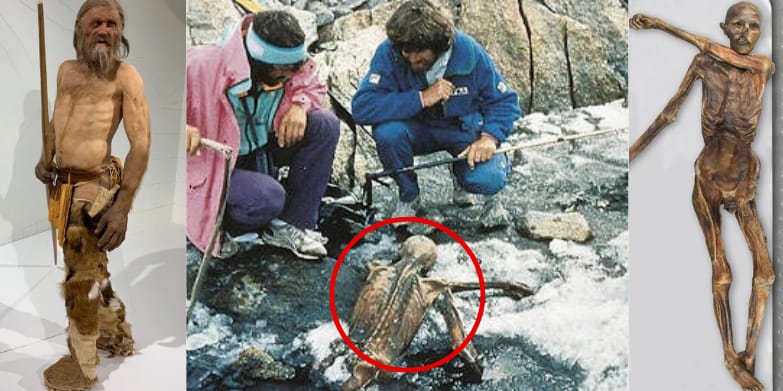Ötzi the Iceman, a remarkable archaeological discovery, continues to captivate the world with his enigmatic story. Found by hikers in the high Alps more than three decades ago, this exceptionally preserved mummy has not only provided valuable insights into life during the Copper Age but also stirred controversy and intrigue surrounding the circumstances of his death. Recent research has shed new light on Ötzi’s life, including revelations about his ancestry, appearance, and the shocking discovery that he was murdered.
Ötzi’s Remarkable Preservation
When Ötzi was first discovered in 1991, scientists believed his pristine preservation was a result of fortuitous timing and location—a happy accident of nature. They assumed he had died in the fall, buried beneath snow and ice, which preserved his body. However, a new perspective has emerged, challenging these long-held beliefs.
Fresh Insights on Ötzi’s Death
Recent research, published in The Holocene, suggests a different narrative. Analysis of radiocarbon dating and surrounding organic materials near Ötzi’s body indicates that he likely died in the spring or early summer, rather than the fall. This shifts the timeline, indicating that Ötzi’s corpse was repeatedly exposed to the elements during the last 5,300 years. Moreover, it appears Ötzi was not killed in the gully where he was found; instead, researchers propose that he died at a higher elevation and was later pushed into the gully by spring and summer runoff or shifting ice.
These findings challenge the notion that Ötzi marked the beginning of a prolonged cold era, suggesting that the circumstances of his preservation were not as unique as once believed. Glacial archaeology may hold more surprises in the future as global warming continues to melt ice worldwide.
Ötzi’s Murder Mystery
One of the most sensational revelations about Ötzi is the discovery that he met a violent end. A recent computerized X-ray tomography (CT) scan revealed a 2-centimeter-long flint arrowhead embedded in his scapula, providing conclusive evidence that he was shot from behind by an arrow. This startling revelation contradicts earlier assumptions that Ötzi died from exposure or illness.
The arrow, which passed through his left arm, caused nerve damage and possibly paralysis. It shattered his shoulder blade but missed vital organs, resulting in a drawn-out and painful death. The angle of the wound suggests that the archer was positioned behind and slightly below Ötzi.
The Path to Ötzi’s Ancestry
In addition to unraveling the mystery of his death, a comprehensive genetic study conducted a decade after a previous effort has provided remarkable insights into Ötzi’s ancestry and physical attributes. Contrary to prior artistic depictions, Ötzi likely had brown eyes, brown hair, and darker skin pigmentation than modern Alps inhabitants. Furthermore, he carried genetic markers associated with male pattern baldness, dispelling the notion of the stereotypical long-haired caveman.
Genetic analysis reveals that Ötzi is predominantly descended from Anatolian agriculturalists who migrated to Europe around 9,000 years ago. These early farmers brought agriculture with them, eventually mixing with local hunter-gatherer populations. Ötzi’s genome shows little evidence of intermixing with these local hunter-gatherers, suggesting that his community remained relatively isolated in the Alpine environment.
The Mystery Continues
While Ötzi’s genetic information has provided valuable insights into his ancestry and physical appearance, questions remain about his community and the social context of his time. Ongoing efforts to collect genetic data from individuals contemporaneous with Ötzi aim to shed light on whether he was a typical representative of his era or if he stood apart in some significant way.
Ötzi the Iceman, once believed to be a frozen relic of the past, continues to surprise and intrigue scientists and enthusiasts alike. Recent research has unveiled new details about his life, death, and ancestry, challenging previous assumptions and rewriting the story of this remarkable prehistoric individual. With each discovery, Ötzi’s legacy grows, offering a fascinating glimpse into a world that existed more than 5,000 years ago, hidden beneath the ice of the Alpine mountains.

